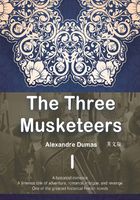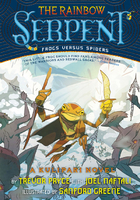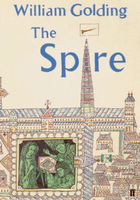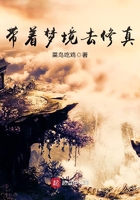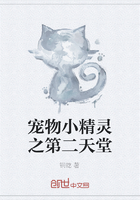Chapter 1
"Gentlemen of Honour,
Family, and Fortune"
Snow gently fell outside a Baltimore tavern on December 3, 1774, as thirty-two-year-old Mordecai Gist addressed the city's social elite. On his own initiative, Gist had gathered together a group of freemen, merchants, shipbuilders, and businessmen who were interested in forming the first independent military company in Maryland to protect their rights and potentially to break away from Britain.
At the time, Baltimore, one of the primary trading centers in the colonies, was a boomtown with a seedy, rough-and-tumble quality about it. One member of the Continental Congress described it as "infinitely, the dirtiest place I was ever in." Another piled on the accolades and called it "the Damndest Hole in the World."
A second-generation Baltimore native, Gist was the son of a prominent surveyor who had helped lay out the city's streets. His uncle, Christopher Gist, had served with George Washington in the French and Indian War, and on two separate occasions he had saved the future general's life. The younger Gist had already established himself as a sea captain and merchant, dealing primarily in textiles and firearms, which had earned him a sizable fortune. He was also a widower. Four years earlier, his first wife had died during the birth of their daughter, who then perished in infancy. At six feet tall, he was a man of impressive stature for his day. Others described him as having a "frank and genial manner." A natural leader known for his forceful opinions, Gist was among the colony's first agitators for independence and later emerged as one of America's most powerful Freemasons.
In October he had participated in the burning of the Peggy -Stewart. In an incident reminiscent of the Boston Tea Party, a captain had brought a ship loaded with tea into Annapolis harbor despite a colonial boycott. Outraged Marylanders gave the Peggy Stewart's captain a choice: either burn his ship and all its cargo or be hanged at his front door. The captain chose to run his ship aground and torch it.
The Peggy Stewart incident occurred ten months after the Boston Tea Party, in which American demonstrators, some disguised as American Indians, had dumped an entire shipment of tea from the East India Company into Boston harbor to protest taxes levied by the British on the tea. It echoed the American cry "No taxation without representation." Many Americans demanded the right to elect the representatives who imposed taxes and passed regulations. The Crown had responded to the Tea Party swiftly with draconian measures that became known as the Coercive Acts or Intolerable Acts. Among other provisions, they allowed British officials to be tried in Britain for crimes committed in the colonies. Another of these acts required colonists to house and feed British soldiers in their homes.
British troops led by General Thomas Gage disbanded the elected colonial government in Massachusetts and shut down the port of -Boston, throwing thousands of men out of work. The crisis in -Boston escalated and fomented discord throughout the thirteen colonies, resonating strongly in Baltimore, where trade was the lifeblood of the community.
On that December night in the tavern, like-minded Patriots had gathered to hear Gist, whom they elected as captain of their company, read aloud the articles of incorporation for the Baltimore Independent Cadets. The charter called for sixty men-"a company composed of gentlemen of honour, family, and fortune, and tho' of different countries animated by a zeal and reverence for rights of humanity"-to voluntarily join and tie themselves together "by all the Sacred ties of Honour and the Love and Justice due to ourselves and Country."
Gist's gravitas and presence reverberated through the room as he read the articles:
We, the Baltimore Independent Cadets, Impress'd with a sense of the unhappy [state] of our Suffering Brethren in Boston, the Alarming conduct of General Gage, and the oppressive Unconstitutional acts of Parliament to deprive us of Liberty and enforce Slavery on His Majesties Loyal Liege Subjects of America in General,
For the better security of our lives, liberties, and Properties under such Alarming Circumstances, we think it highly advisable and necessary, that we form ourselves into a Body, or Company in order to [learn] the military discipline; to act in defence of our Country agreeable to the Resolves of the Continental Congress.
The cadets promised to march within forty-eight hours to the aid of any sister colonies that needed their help, to obey their elected commander, to purchase their own uniforms and equipment, and to submit to a court-martial for any default "contrary to the true Intent and Meaning of this Engagement." However, as true gentlemen, they would not submit themselves to corporal punishment.
The young merchant and the other newly inducted members of the company made history that day. Gist's independent company was the first of its kind in Maryland, but similar companies soon sprang up across the colonies. Unbeknownst to them at the time, the men in that tavern would become one of only a few core units crucial to the continued existence of the entire Continental Army throughout the Revolutionary War. At key points, their participation made a difference that allowed the army to survive-often at an enormous price. Sickness and privation of the most severe kind (including marching barefoot for thousands of miles over many years), British bullets, and the hazards of imprisonment would take their toll. Very few of the men who gathered that night at the tavern or those who joined them later would survive eight years of war, multiple campaigns, and dozens of battles unscathed.
The cadets, later quietly renamed the Baltimore Independent Company, formed a cadre that was incorporated into multiple companies and regiments that played a key role in many battles of importance during the American Revolution and fought in both the North and the South. Built on personal relationships with deep family ties that spanned decades, the Baltimore Independent Company was a tight-knit group of close friends who forged one of the most legendary units of the American Revolution.
One of those men crucial to the company was twenty-three-year-old Samuel Smith. A born leader, Smith was first elected sergeant within the company and quickly rose through the ranks as an officer. Like many of the cadets, he had been trained in the classics, studying Latin and Greek at school. As a young man, he had worked in his father's countinghouse and traveled to Europe on one of his father's merchant ships. He proved to be charismatic and a natural battle commander. Eventually, he would assume command of the Baltimore Independent Company and many other units. In time, he became one of the finest regimental commanders of the war.
Like Gist and Smith, many of the company's members were prosperous merchants. For them, the decision to join the company meant sacrificing their livelihood-the ability to trade with Great Britain. For years they had been on the sharp end of onerous taxes and restrictions that required the colonies to trade exclusively with Britain. Responding to the spiraling crisis in Boston, delegates from the American colonies met in the First Continental Congress. Formed at the urging of Benjamin Franklin and first organized in 1774 in Philadelphia, Congress comprised representatives from twelve of the thirteen colonies (initially Georgia didn't participate, since it felt that it needed British protection from hostile Indians). The Congress remained undecided on the issue of declaring independence from Great Britain, but its members firmly believed that King George III owed the people of the colonies better treatment. The representatives wanted their voices heard in London. On September 5, 1774, Congress adopted the Articles of Association, which declared that if the Intolerable Acts were not repealed by December 1, 1774, the colonies would boycott British goods. A provision in the articles also called for an embargo of British goods by September 1775 if the acts weren't abolished. It was a bold move: Americans struck at the heart of British trade, which heavily relied on the North American economy. The Continental Congress's actions were a serious challenge to imperial rule, essentially amounting to a declaration of economic war against the Crown.
The independent spirit that gave rise to this decision to rebel against Britain had been fomenting in Maryland since its founding. In 1632 the king granted the ownership of the colony to George Calvert, Lord Baltimore, a Catholic, who was designated the "proprietary." Unlike most of the colonies, which answered to the king or to locally elected governments, Maryland answered to the proprietary, who set up the government as he saw fit. The arrangement essentially created "an empire within an empire" and made it easy for the people who lived in Maryland to see themselves as independent of the Crown. This unusual form of government persisted until 1691, when Britain appointed a royal governor for the colony.
In the middle of the eighteenth century, the French and Indian War planted seeds of discontent in America and had an impact on many of the Maryland officers. Also known as the Seven Years' War, the war was a worldwide conflict between Britain and France that began in 1754. Both countries had extensive holdings in the New World, and disagreements arose over disputed territory and trading rights in the Ohio Valley. The governor of Virginia sent twenty-one-year-old Major George Washington and a small group of men to evict the French from the area, but the French refused to leave, pushing the two countries on the path toward war. On May 28, 1754, Washington led the British troops to victory in the Battle of Jumonville Glen, which is generally regarded as the first battle in the French and Indian War.
In the early days of the conflict, both sides developed irregular warfare techniques, such as the use of proxies and the use of ranging forces. The proxies included Rogers' Rangers, Americans who fought for Britain. The British and the French also developed light infantry, which were lightly armed forces known for their quickness, speed, and flexibility. More importantly, the colonists learned to train, organize, and move large numbers of men through untamed wilderness. Americans fighting for the British-including George Washington, William Smallwood, and Daniel Morgan, along with future Americans and British officers Edward Hand, Horatio Gates, and Charles Lee-gained invaluable battle experience in the conflict. They also learned Indian tactics. Many Native American tribes fought on the side of the French during the conflict. Unlike the Europeans, the tribes often struck in surprise attacks with small raiding parties that hit the enemy hard and then retreated before casualties could mount, and they fired from behind trees and other natural obstructions rather than out in the open. The seeds of an American way of waging war were planted.
By 1760 most of the fighting in North America had come to end, although battles continued to rage in the West Indies and Europe for some time. The North American portion of the war officially came to a close on February 10, 1763, when the two sides signed the Treaty of Paris. Five days later, they ended the European war with the Treaty of Hubertusburg. Under the terms of surrender, France gave up all rights to the mainland of North America but held on to its island colonies in the Caribbean and the Gulf of Saint Lawrence. Spain, which had entered the war on France's side, agreed to cede Florida to Britain in exchange for regaining control of Cuba and gaining control of Louisiana. Britain was left as the primary power in control of Canada and the thirteen colonies that would become the United States.
While the British were victorious, the cost was exorbitant. The war had nearly doubled the empire's debt. To offset this enormous financial burden, the Crown began raising taxes on its colonies so that they would pay for their own administration and defense, allowing the government in London to put more money toward its war debts. When Parliament passed the Stamp Act in 1765, the colonists were primed to revolt. Extremely unpopular in the American colonies, the onerous act required that all printed materials, including legal documents and newspapers, use specially stamped paper produced in Britain. The colonists objected to this regulation on the grounds that they shouldn't be taxed without their consent. Although Parliament eventually repealed the Stamp Act, it passed a series of other laws and taxes that the Americans found objectionable, including a law that forbade the colonies from issuing currency and a fateful tax on tea.
Outraged by the new and oppressive laws, Massachusetts appealed to its sister colonies for support. In a show of solidarity, the Continental Congress agreed to ban the import of British goods. It went one step further, by placing an export ban on American commodities that were valued by the Crown, such as tobacco, rice, and a long list of naval products. The men in Maryland who joined the cadets certainly objected to the taxes, but for them the Revolution wasn't only about money. They were motivated by ideals of freedom and liberty, and they didn't want their daily lives and business decisions at the mercy of the bureaucracy in London.
While war seemed inevitable in hindsight, it was not a foregone conclusion, even as the various independent companies throughout the colonies began to organize. In fact, many of the colonies hoped for a diplomatic solution to the crisis that would keep them as part of the British Empire. The act of rebellion-if it came to that-would be a last resort.
With the clouds of war gathering on an uncertain horizon, the Baltimore cadets began to arm and outfit themselves with the best weapons and uniforms money could buy. This company of wealthy Baltimoreans went into battle carrying a "good gun" with a bayonet plus a brace of pistols and a sword. However, most of the other American units could not afford such expensive guns and supplies; many of their brothers-in-arms would fight with old hunting rifles or makeshift weapons. And while many Americans marched in the leather or homespun clothing they wore every day, Marylanders of this company wore "a Uniform Suit of Cloathes turn'd up with Buff, and trim'd with Yellow Metal, or Gold Buttons, White Stockings and Black Cloth half Boote." Emboldened by their example, numerous independent companies formed across Maryland for the defense of the state.
Shortly after the signing of the company's articles of incorporation, training began. Drilling occupied the bulk of each day. Cadets learned how to march and create battle formations. They also practiced loading and firing their muskets as a group and possibly engaged in target practice. Gist's men had their own drillmaster, a cadet named Richard Cary. Cary had previously served as a member of the Ancient and Honourable Artillery Company of Boston, which was commanded by John Hancock.[2] Cary's high-quality training and the company's expensive equipment set Maryland's troops apart from those of other colonies as war unfolded and turned them into, arguably, the first elite infantry unit in the Continental Army.
[2]. Formed in 1637, the artillery company was one of the first citizen militias in the colonies. It still exists today, serving primarily as an honor guard for the governor of Massachusetts, and is the one of the oldest chartered military organizations in North America.
Voluntary enlistment in these independent companies violated British imperial law. Doing so represented open defiance of Crown rule and constituted an act of treason potentially punishable by death. The sixty Patriots who first signed the articles of incorporation for the Baltimore Independent Cadets were effectively signing their own death warrants. That threat was quite real. When the British had put down an insurrection in Ireland around the same time, a judge decreed to the captured revolutionaries, "You are to be drawn on hurdles to the place of execution, where you are to be hanged by the neck, but not until you are dead, for while you are still living your bodies are to be taken down, your bowels torn out and burned before your faces, your heads then cut off, and your bodies divided each into four quarters."
Elite warriors throughout history have believed that willpower and determination can overcome all odds. This thoughtful, independent company of men ardently embraced their ideals, making a purposeful decision to sacrifice their fortunes, their livelihood, and possibly their lives for the promise of an idea with the risk of an unknown future. Gist, like many Patriots, believed that his men's fervor would help them overcome the much larger, better-equipped, and highly trained British army.
Gist was not alone in his belief. Among Gist's papers is a letter addressed to the Baltimore Independent Company. Full of classical allusions, the letter was signed by an admirer of the company who called himself Agamemnon,[3] the name of the Greek king who united his country-men to fight against the Trojans. After asking that his letter be read aloud to the group, he refers to Xerxes's army of Immortals and compares the Marylanders to the Spartans who stood against a much larger force at the Battle of Thermopylae. The letter explains, "About three hundred men who's hearts were warmed with patriotism, [held off] an Army of Twenty thousand." The letter writer believed that Gist's men, like the Spartans and other elite units throughout history, could play a crucial role in shaping the future of the new nation.
[3]. The original letter used the Latin spelling of Agamemnon.
The comparison would prove eerily accurate. In a little over a year, Washington would call upon the Marylanders to make an epic stand of their own against overwhelming odds.
Chapter 2
Smallwood's Battalion
and the Birth of an Army
On May 5, 1775, swept up in revolutionary fervor, the Baltimore Independent Company traveled to the outskirts of Baltimore, where delegates to the Continental Congress were due to pass through the city on their way to Philadelphia. The honor guard waited in eager anticipation. Their patience was rewarded when George Washington and several other delegates-soon to be heroes of the Revolution-rode into town.
The Marylanders eagerly accompanied these dignitaries to the lavish Fountain Inn, located near present-day Light Street and Redwood Street, which boasted excellent wine cellars, twenty-four bedrooms, and six mahogany-finished grand parlors. On the inn's grounds, the cadets lined up in formation and discharged their muskets into the air three times in salute of the cavalcade. The pomp and ceremony continued through the next day when Washington, then a colonel, reviewed the troops on the town common. He expressed "satisfaction in the appearance and behavior of the officers and men." Mordecai Gist's Independent Company then led the way to the courthouse, where the city fathers entertained the dignitaries in style. During the proceedings, the delegates offered a toast: "May the town of Baltimore flourish and the noble spirits of the inhabitants continue till ministerial tyranny be at an end." The defenders of Maryland were about to take their first steps as defenders of a larger cause.
After their brief stay in Baltimore, the southern delegates arrived in Philadelphia, where the Second Continental Congress convened on May 10, 1775. On the 19th of the previous month, the Patriots had fired the "shot heard round the world" at the Battles of Lexington and Concord. It was the start of open conflict between the colonists and their mother country.
The siege of Boston followed these initial clashes. Massachusetts militia and other American troops, furnishing their own clothing, equipment, and arms, blockaded all land routes out of Boston, trapping the British garrison there despite the fact that no American army existed and none of the colonies had declared independence. Instead, in Washington's own words, there was "a mixed multitude of people… under very little order or government…. Confusion and disorder reigned in every department."
In June, the Second Continental Congress made a momentous decision. In spite of the fear that an army could someday be used against its own people, Congress established a military force and commissioned Washington as the "General and Commander in Chief of the Army of the United Colonies." Eventually, resolutions from Congress called it the "Continental Army" or "American Army."
A second-generation Virginian born to moderately prosperous planters, Washington had been educated in the colonies and had become a surveyor before serving with distinction during the French and Indian War. Rising to the rank of colonel and regimental commander in Virginia's provincial forces, he gained the military and political skills he later needed as the leader of a fledgling American army. Six-foot-two and handsome with a commanding presence and countenance, Washington was one of the best riders in the colonies and possessed enormous physical strength. His inheritance of the plantation at Mount Vernon, along with real estate holdings of his wife, Martha Custis, made him a wealthy man. That status thrust him into the upper echelons of colonial society. With his contacts, temperament, and martial record, Washington seemed to be an excellent choice for the role of commander in chief. But he was far from the only option.
Washington's chief rivals for the position included two veterans of the French and Indian War: Horatio Gates and Charles Lee. Lee had considerable experience fighting overseas in various European wars, and Gates had distinguished himself fighting in North America. But perhaps Washington's most serious rival was the president of the Continental Congress, John Hancock, who had never been in battle and whose only military experience was commanding parade ground maneuvers for the Ancient and Honorable Artillery Company of Boston, the same unit to which Richard Cary belonged.
John Adams noted that Washington had two invaluable leadership skills: "He possessed the gift of silence and had great command." As the most crucial officer of the Revolution, Washington had to transform citizens from all walks of American life and all thirteen colonies, including the Marylanders, from undisciplined neophytes into soldiers. Eventually, the commander in chief formed a special relationship with the elite fighting soldiers of Maryland, one of the few units to fight in both the North and the South, men who would hold the army together in the darkest hours of the Revolution.
After establishing that Washington would lead the colonial army, the penniless Continental Congress set about raising that army. In a series of resolutions, the Congress recommended that each of the thirteen colonies establish a battalion[4] "at the expense of the Continent." Maryland answered this call in a unique way: a battalion with a core cadre of officers and NCOs from the independent cadets at its heart. Smallwood's Battalion was born.
[4]. Even though a battalion is typically about a third the size of a regiment, the size and strength varied by unit, and "battalion" could also mean any subdivision of a regiment. The military of the time often used the terms "battalion" and "regiment" interchangeably.
In December 1775 the Maryland Convention, Maryland's Patriot government during the early part of the Revolution, resolved to raise an army of 1,444 troops "in the pay and for the defense" of Maryland. The following month, the government finalized its plan, determining that the force would consist "of a battalion of 9 companies, 7 independent companies, [and] 2 companies of artillery." Each company consisted of at least sixty-eight privates, and some included as many as one hundred. All the men were to be volunteers, described as "young hearty robust men, who are tied by birth or family connection or property to this country; and are well practiced in the use of firearms."
Answering the call of the Second Continental Congress to enlist regulars for a Continental Army, Maryland created a force unique in the thirteen colonies because it was neither militia nor Continental; instead, it was a state-funded (from taxes levied from Marylanders and later the seizure of Loyalist property) defense force created to protect Maryland from the British and from the internal threat of Americans loyal to the Crown.
These volunteer regulars enlisted for a year and earned wages paid by Maryland for their service. Privates initially received five and a third dollars; sergeants eight dollars; and the highest-paid member of the unit, the colonel, fifty dollars. These wages, even when they were paid, were barely enough for any member of the force to scrape by. Many of them never received their full wages, which were docked to pay for uniforms. Some soldiers in good standing later received a land bounty.
Smallwood's Battalion also had a tiny contingent of musicians, specifically drummers and fifers. In the eighteenth century men could hardly hear shouted commands over the roar of cannon and muskets, so they learned to follow orders given by the beat of a drum. Each army had scores of drum signals, and men who drilled to them instantly followed these commands. Fifers and drummers also played marching music, popular tunes that the men sang along to. Slowly, these drills and martial music welded men together as they formed a sense of unity.
The men needed shoes, buckles, stockings, shirts, overalls, a hat, a comb, a blanket, a knife, tents, a camp kettle, and other related items in addition to weapons. In the beginning, they supplied many of these needs themselves. Housing and tents were also in short supply. One officer noted that his company was so poorly equipped that the men had to "encamp out among the pines without Blankets or Tents." He complained, "We stand here exposed and remain in a most Defenceless state." Over time, they needed replacements for their clothing and equipment. Sometimes Congress or the states provided these for the troops, but more often, the men went without.
The new troops also needed food. Officers exchanged many letters on the subject of acquiring meat and bread to fill the battalion's stomachs. Congress fixed rations at a pound of beef, three-quarters of a pound of pork, or a pound of fish per day. Provisions also included peas, beans, vegetables, "cyder," and molasses. But like the uniforms and equipment, the rations were more hope than reality. As the war progressed, many Marylanders starved, wore rags, and went barefoot.
Informally, the Marylanders referred to these companies collectively as Smallwood's Battalion, as the colony placed the bulk of the existing independent companies, including Gist's, under the leadership of Colonel William Smallwood. Born in Charles County, Maryland, and educated at Eton College in England, Smallwood came from a family of politicians. After serving in the French and Indian War, he was elected as a representative in the Maryland provincial assembly, the local government for the colony. At the time of his appointment, he was a portly forty-three-year-old planter who was highly respected in Maryland but who also possessed a pettiness that didn't endear him to many of his men.
Being placed under Smallwood's command did not sit well with Gist, who sent a letter to the Maryland government demanding that he be allowed to continue as commander of his company. It stated that Gist, on his own time and at his own risk, recruited the company that had twice elected him as commander. Gist imbued a winning tradition in the troops, teaching them that "Success alone is merit." Finally, he concluded, "If appointed to an office (not beneath what my former rank entitled me to) I shall endeavor to acquit myself with honour to those who are pleased to appoint me." He signed the missive, rather ironically, as "Your most obedient, humble servant, Mordecai Gist."
The convention not only acceded to Gist's request, but promoted him, making him a second major of the entire regiment under Smallwood. Gist's former company retained something of its independence although it was now under Smallwood's command. In addition, many of the men from his company were given high positions in the newly established battalion. Former members of the Baltimore Independent Company made up a quarter of the commissioned and noncommissioned officers in Smallwood's Battalion.
Many of the officers in Smallwood's companies possessed strong leader-ship qualities. Those characteristics allowed many to attain prominent positions in politics after the war. Several became congressmen or state senators, and Smallwood himself eventually became governor. The original slate of officers in the battalion included Nathaniel Ramsay, a lawyer from Cecil County, who was a captain in the unit. Educated at the College of New Jersey (today Princeton University), Ramsay was thirty-four when the Maryland Battalion formed, and so was one of the older men in the regiment. Ramsay's family included several notable figures. His brother David Ramsay became a prominent early historian of the American Revolution, and his brother-in-law was the famous artist Charles Willson Peale, who served with the Pennsylvania militia. Peale painted several portraits of America's founders, including nearly sixty portraits of George Washington.
Charles Willson Peale's younger brother James was also a renowned artist, although not as highly regarded as Charles Willson. The two lived and worked together for a time, with James focusing on miniatures. In January 1776 James accepted a commission as an ensign in Smallwood's Battalion at the age of twenty-six. The ensigns, junior officers, had a special place in a company or regiment, as they took turns carrying the colors. After about two years of service, Peale was promoted to captain.
Finding enough officers with natural leadership qualities proved challenging, as was the case for any fledging military unit formed from scratch. One Baltimorean wrote to the Maryland authorities, "There are a good many more vacancies in the 8th Battalion as soon as they can be collected together a list will be laid before you in order that they may be filled up." He added, "The men are undisciplined they therefore more especially require to be full officer'd. But as we may want time to do that. I am determined to march with what we have."
Another of those new officers was Edward Veazey, a fourth--generation American from Cecil County who was named captain of the 7th Independent Company under Smallwood. Like many of the young officers, Veazey was from one of Maryland's leading families. His relatives were wealthy, slaveholding plantation owners, and many of them held public office in Maryland during and after the Revolution. Also from a prominent family was Bryan Philpot Jr., a twenty-year-old who obtained a commission as an ensign. Philpot's father was very influential in Baltimore as a successful merchant and landowner. Later, the city named a street, bridge, point, and hill after the family.
Many of the Maryland officers were quite young when they assumed their ranks. William Sterrett was only eighteen years old when he became a first lieutenant in the Maryland Battalion in January 1776. Descended from Irish immigrants, the Sterrett family ran a very successful store in Baltimore, John Sterrett & Company, which sold imported goods like cloth and salt; the Sterretts also owned shipping interests and land in the area. The family ardently supported the Revolution, and William's brother John served as a captain in the Baltimore County Militia. His sister Mary, known as Polly, later married Mordecai Gist. A large number of the men in the battalion were bound together by friendship or family ties.
These young officers were often promoted through the ranks quickly. James Fernandis originally entered Smallwood's Battalion as an enlisted soldier on January 30, 1776. Of Spanish ancestry, the Fernandis family had immigrated to Maryland more than 120 years before the Revolution broke out. Within six months of enlistment, Fernandis had received a commission as a lieutenant. Six months later, he was a second lieutenant, and by April 1777 he had become a first lieutenant. Another, John Bantham, a twenty-year-old from Kent County, enlisted as a private but became a sergeant within just a few days, likely because of his innate ability to lead men.
As the acid test of leadership, the officers were required to recruit their own men, who commonly included people from their hometowns. Each company quickly filled up. The Marylanders spanned the spectrum of socioeconomic classes but were largely farmers (and their sons) and some artisans, like ship's carpenters, brewers, bakers, and blacksmiths. One officer stated when writing to Smallwood that he hoped to "have a very Respectable Company of farmers sons as I am determined I will take very few, if any, out of this Town."
The muster rolls from 1775 to 1776 are fragmentary. Based on information about one company, the average age of the recruits, who hailed from all of Maryland's counties, was just under twenty-five years, and the average height was around five-foot-seven. A variety of factors motivated the men to join: For many, it was patriotism; for -others it may have been a chance to improve their standard of living. Still others, green and unaccustomed to the horrors of war, may have been seduced by dreams of glory and honor.
In all wars, the privates do most of the fighting; Smallwood's Bat-talion was no different. The enlisted ranks were filled with men who signed up for one year of service, such as John Hughes, a twenty-six-year-old Marylander from Frederick County. Some, like John Boudy, a young teenager who lived with his parents at Bald Friar's Ferry on the Susquehanna River in northern Maryland, served through the entire war. Many sets of brothers also joined Smallwood's Battalion, including the Scottish-born McMillan brothers, who were likely poor tenant farmers raising tobacco in the eastern portion of Harford County in the Chesapeake region. Both men started out in the militia, enlisted in the battalion in the spring, and were quickly promoted to sergeant in a few months.
Free African Americans also joined the ranks of Smallwood's Battalion. While the exact number who served the unit through the course of the war is impossible to determine, estimates say around five thousand African Americans served in the entire Continental Army and twice as many fought for the British. This was not only America's first army, but America's first integrated army, the likes of which wouldn't be seen again until after World War II. In a cruel irony, thousands of black men fought for the values of liberty and freedom while tens of thousands of their brothers remained enslaved.
Indentured servants were not eligible for service unless they had permission from their master or mistress. Indentured service and slavery were both fairly common in Maryland at the time: a 1752 census of Baltimore County listed 11,345 free whites; 1,501 white indentured servants and convicts; 4,143 black and mulatto slaves; and 204 free blacks and mulattoes. Sometimes servants signed up illegally. One such case was Daniel Brophy, who joined Smallwood's Battalion in the spring of 1776. Brophy was later returned to his master after the man demanded restitution.
The company's noncommissioned officers helped with recruitment. Sergeants were specifically assigned this task. Twenty-three-year-old Gassaway Watkins began his career as one of those NCOs. Born and raised in Anne Arundel County, Maryland, he attained the rank of ensign the year he enlisted and later became a captain. A "man of magnificent physique, six-feet-two inches in height, well-proportioned and developed," Watkins had statuesque height that made "him conspicuous in battle."
As the companies filled up with men, the next task was to provide training, equipment, and arms.
Chapter 3
Girding for War
Arming Smallwood's Battalion was a nightmare. Most of the firearms were personally owned by the soldiers who carried them, and this situation led to a hodgepodge of makes, models, and calibers. In the beginning, many of the newly minted soldiers didn't have any weapons at all during their drill. As supplies came in, they received muskets, sometimes called firelocks.
Operating this kind of weapon was a time-consuming chore. Troops like the Marylanders carried cartridge pouches that held twelve to thirty-six prepared cartridges. The cartridges were tubes of paper with the same diameter as the musket bore. Each contained a ball and a premeasured amount of black powder, and they were crimped on the end. To fire, the soldier would pull out a cartridge, rip off the top of the paper with his teeth, pour a small amount of powder into the priming pan, pour the rest of the powder into the musket barrel, and then insert the ball and paper into the barrel and ram them down. Only then was the musket ready to fire. Under the best possible conditions, a well-trained and well-supplied soldier could load and shoot four or five times per minute. In the heat of battle, distracted by the smoke and sounds of conflict and with adrenaline surging through his veins, a soldier often forgot or skipped essential steps in the intricate process, which could lead to misfires that had deadly consequences.
Technology drove tactics. Because muskets were so inaccurate, troops practiced laying down concentrated fire in large numbers. Soldiers of the time lined up in rows, sometimes eight or ten ranks deep, and fired en masse, meaning that everyone in the front ranks who had a clear line of sight to the opposing side pulled his trigger at the same time. This massed fire improved the odds of hitting the enemy.
As formidable as they sound, most of these volleys weren't very successful. "It was just possible for a good marksman to hit a man at 100 yards; a volley could be fired with some chance of obtaining hits on a mass of troops at 200 yards; but at 300 yards fire was completely ineffective." One trial in France showed just how inaccurately muskets performed: 60 percent hit the target at 82 yards, 40 percent hit at 164 yards, and a mere 23 percent at 300 yards. An observer wrote, "Powder is not as terrible as believed. Few men in these affairs are killed from in front while fighting. I have seen whole salvoes fail to kill four men." The reality is that parade ground trials did not translate into battlefield actuality: men had adrenaline surging, smoke obscured lines of sight, misfires occurred with regularity (sometimes as high as 25 percent), and often the enemy was barreling down with fixed bayonets. In the chaos, men sometimes broke from fear, and even a well-trained soldier couldn't get off as many well-aimed shots in combat as in a trial setting.
All firearms of this era were made by hand-like everything else a soldier wore and carried-and some gunsmiths were better than -others. The officers set about testing every gun provided to the regiment by Baltimore manufacturers. Evidently, some of the gun makers were cognizant that their wares weren't up to the challenge; as one Marylander reported in February 1776, "Mr. Keener [a local gunsmith] after seeing the rest try'd refus'd to have his proved but upon my threatning him a good deal he comply'd." In fact, more than half of the guns Keener supplied failed the test. A higher percentage of the guns from other makers passed, and the tester "stamp'd all that prov'd good." In another message, one officer reported that only eight of twenty-nine muskets in his company were working. The rest were "vile trash" that couldn't be made to function.
Smallwood's Battalion also requisitioned some "of the guns which were in the hands of the minute Company" that had formerly been defending the colony. Minute companies were made up of militia sometimes called minutemen, local civilians in the area who could answer the call to arms in an emergency. This wasn't a good solution, however, as the minute company's guns were "very indifferent, indeed so bad that twould be cruel to set me to work with them," noted one officer. That insufficiency left the militia without the weapons it needed. "The militia are thro' this county in a most defenceless state, and my Company if possible in a much worse one," the officer added.
Inequities in the supply of various units impacted the troops' morale on several occasions. Captain Edward Veazey, stationed on the Eastern Shore, said the lack of arms and uniforms made him "very uneasy." It became a problem because the officers "understood the troops on the W. Shore are generally well armed & provided with Cloaths."
In an effort to address the problem, William Smallwood sent Jack Steward to search for arms and gunpowder. Known for his sizable ego, Jack was the son of Stephen Steward, who owned a forty-three-acre shipyard south of Annapolis. Six feet tall, Jack Steward was a handsome man and well built. A former Quaker, he was courageous and lived by his personal motto, "You only live once." Commissioned a first lieutenant on January 14, 1776, he quickly rose through the ranks and became a captain in charge of a company that same year.
Likely accompanying Steward was his lifelong friend Benjamin Ford. The two men were neighbors, and Ford's grandfather built Steward's house. Like Steward, Ford was a strong and charismatic leader. Both proved practically fearless in battle.
Steward's quest for gunpowder was indicative of America's need for military supplies. When the war began, the colonials had only about half a pound of gunpowder for each of their soldiers. Throughout the conflict, this was an Achilles' heel of sorts for the Revolution. Powder enabled or curtailed success on the battlefield. As Americans manufactured only about 10 percent of what they used, 90 percent of it had to be imported.
British military planners recognized the importance of gunpowder. In October 1774 the Crown advised its colonial governors to "take the most effectual measures to arresting, detaining and securing any Gunpowder, or any sort of Arms or Ammunitions which may be attempted to be imported into the province." British troops soon began seizing or destroying stores of ammunition and gunpowder whenever they found any. The colonists scoured the earth for powder and saltpeter (potassium nitrate, one of the key ingredients in explosives) to replenish their stores. They sent agents to Canada and the Caribbean and brought in imports from France and the Netherlands. They also attempted to produce their own gunpowder from locally mined materials. These efforts were so ineffective that Benjamin Franklin thought they might as well revert to bows and arrows.
The Marylanders received bayonets, which were unusual for colonial troops. A typical bayonet at the time was a triangle socket bayonet that was fitted on the end of the musket. These deadly blades were stabbing weapons that could impale a man's guts, leaving mortal wounds. Proper training allowed the men not only to withstand a bayonet charge from an enemy force but also to make an attack of their own.
Once the companies were formed and equipped, they were positioned in the spring of 1776 to defend Maryland's most important economic centers. Six companies, the majority of Smallwood's Battalion, were stationed in Annapolis, while the remaining three, commanded by Mordecai Gist, went to Baltimore. The independent companies were sprinkled throughout Maryland.
Also sprinkled throughout Maryland were many families who remained loyal to the Crown. Exact figures on the number of American Loyalists are impossible to determine, but by the end of the war, more than eightly thousand Loyalist Americans would be banished from America. One of those men found his name in the Maryland Journal and Baltimore Advertiser because Gist placed the following advertisement there:
Deserted. From the Baltimore Independent Company on the night of the 24th instant, a certain Thomas Freshwater. He is an Englishmen, about 5 ft. 7 in. high, swarthy complexion, long black hair, much given to drink, and when drunk very impertinent; had on a sute of drummers clothes. It is suspected that some of the Tories in this place have been affiliated with his escape and forwarded him to Annapolis, where he has been since seen. Whoever apprehends said deserter and shall deliver him to me, shall receive a reward of forty shillings.
A civil war raged throughout the colonies and separated many of the citizens of Maryland.
Chapter 4
America's First Civil War
A low murmur ran through the crowd of Marylanders gathered for a meeting of two militia companies in Frederick County, Maryland, northwest of Baltimore on February 6, 1776. Robert Gassaway rose to his feet and began speaking. Although all present had volunteered to defend their homes from British forces if the need should arise, many retained some feelings of loyalty to the Crown. More than a few were also uneasy about the new colonial organizations that were taking on the role of government. Gassaway gave voice to their secret fears, saying that "it was better for the Poor People to lay down their Arms, and pay the Duties and Taxes laid upon them by the King and Parliament, than to be brought into Slavery and to be commanded and ordered about as they were" by rippling effects of the crisis in Boston and by the Patriot government in Maryland. He intimated that Marylanders, including his sons, were compelled to sign up for the militia because they feared what the local Committee of Observation, the group charged with suppressing Loyalists, would do if they refused to join. "My brave boys fight away," he added with his hands clasped around his neck, "for fear their necks should be stretched."
Angrily, the more patriotic among the group told Gassaway to keep his opinions to himself.
But the outspoken Marylander wouldn't be silenced. Gassaway claimed he "was satisfied he was right," and he called on the militia to lay down its arms.
Gassaway's dissent provides an example of the stark divisions between Loyalists and Patriots that tore many colonies-and many families-apart during the war, which wasn't only a revolution but a civil war as well.
As for Gassaway, the threat of imprisonment later convinced him to sign a poorly written confession, which said, "I confess that I am sory to think that I should have said enni thing that should have given enny purson reson to think that it was my deiser to disunite the peopel and, And acknowledge my error in so doing, and do promis for tim to cum to behave myself carfully."
This civil war was particularly evident in Maryland, where Chesapeake Bay divided the colony in half, effectively creating two factions. Those who lived on the Eastern Shore tended to be Loyalists, or Tories, while other areas were home to more Patriots.
From Maryland's founding in 1632, its geography had separated it into two sections. On the western shore of the Chesapeake, the towns of Annapolis, Saint Mary's City, and Baltimore served as way stations for travelers and merchants journeying to and from other colonies. Trade flourished and residents were in regular communication with the other colonies. The Eastern Shore, by contrast, was much more isolated. The farmers, plantation owners, and fishermen of the area tended to keep to themselves, with religion often playing a major role in the colonists' lives. Although the colony had been founded as a haven for Catholics, by the end of the seventeenth century, Protestants were asserting more control in the colony, just as they were in Britain. On the Eastern Shore, the Church of England dominated the religious landscape. The local church leaders encouraged their congregations to remain loyal to Great Britain and, in many cases, the people followed the recommendations of the clergy. However, supporters of both sides could be found throughout the state and the rest of the colonies, often living close together. In the crucible of insurgency, ethnic, religious, and secular divisions resulted in bitter rivalries, pitting neighbor against neighbor and brother against brother.
Dealing with the numerous Loyalists in Maryland fell to the colony's Council of Safety. This euphemistically named body provided a mechanism for military planning and hoarding of supplies and weapons, as well as administering the government and clamping down on dissidents.
At the urging of the recently convened Second Continental Congress, each of the colonies formed a similar council. Marylanders who refused to sign an oath of association were labeled "Non-Associators," and the state required them to pay fines and forfeit their firearms; in some cases it also seized their property.
At the local level, towns like Baltimore established Committees of Observation, which provided extralegal courts to administer regulations. There were approximately nine hundred such committees across Maryland. They served to intimidate Loyalists, confiscate their property, and enforce laws. Mordecai Gist and other prominent members of the Baltimore Independent Company were heavily involved with both the Council of Safety and the Committee of Observation, taking orders from both groups.
The new government organizations effectively kept many Loyalists and those with mixed allegiance in check. The committees also had a financial component; they suspended British debt laws and collection activities from Britain. In the Chesapeake region, debt owed to British factors and agents was a major issue, as many Patriot planters were overextended. After examining British Treasury records, one historian claimed that more than fifty-five members of Virginia's House of Burgesses were in hock to the Crown. George Washington and Thomas Jefferson each owed between one thousand and five thousand pounds-a fortune at the time-and many prominent Marylanders joined their ranks. In addition, the state owed £289,000, largely from a trade deficit in which imports outstripped exports.
Loyalty to the Crown and loyalty to the Patriot cause divided several of the families of Smallwood's Battalion. Eastern Shore native John Gunby was a fierce Patriot, but his father "was an ardent supporter of the Crown; in other words, a Tory." Called "one of the most gallant officers of the Maryland Line under Gen. Smallwood," John Gunby was born in Somerset County. At the age of thirty, he volunteered as a minuteman, despite the objections of his father, who warned that he could be hanged for treason. The younger Gunby replied, "I am determined to join American forces; I would sooner sink into a patriot's grave than wear the crown of England." Like Gist, he raised an independent company that became part of Smallwood's Battalion.
Despite their disagreement, Gunby continued to respect and admire his father. He wrote that "Tory" was
a name to which a great deal of undeserved odium has been always attached in America. Yet Toryism in principle was nothing but a conservative attachment to the government and institutions of the Mother country…. This admirable sentiment of loyalty to the king was so strong that it required almost the bitterness of death to break it. All the more, we must admire the heroic manhood of the colonies, which threw off these attachments in the cause of freedom and endured all kinds of pain and suffering rather than endure oppression.
These competing desires-loyalty to the Crown and the desire to be free from oppression-warred within the hearts of many colonists, causing some of them to change their allegiance during the course of the Revolution.
One Tory who didn't have divided loyalties was Eastern Shore mogul and pamphleteer James Chalmers, owner of an island on the Chesapeake. With his fortune of more than ten thousand pounds, he had purchased several sprawling tobacco plantations on the Eastern Shore and owned scores of slaves. He had an inner circle of many influential and wealthy Loyalists. An Englishman described the recent Scottish immigrant by saying, "The worthy proprietor lives in a manner independent of mankind, the monarch of his little fertile territory." Zealously opposed to revolution, Chalmers published scathing rebuttals to Patriot literature, including Thomas Paine's Common Sense. He wrote that Paine, "shamefully misrepresents facts, is ignorant of the true state of Great Britain and her Colonies, utterly unqualified for the arduous task, he has presumptuously assumed; and ardently intent on seducing us to that precipice on which himself stands trembling." He concluded, "Volumes were insufficient to describe the horror, misery and desolation, awaiting the people at large in the Syren [Siren] form of American independence. In short, I affirm that it would be most excellent policy in those who wish for true liberty to submit by an advantageous reconciliation to the authority of Great Britain; 'to accomplish in the long run, what they cannot do by hypocrisy, fraud and force in the short one.' independence and slavery are synonymous terms."
After refusing to sign an oath of fidelity to the Maryland Council of Safety and being beaten nearly to death by a mob in Chestertown, Chalmers prepared to "repel force by force." Within a year he was talking to the British commander in North America. In time he became a mirror image of Gist, raising his own regiment of Loyalists, just as the Baltimore merchant had assembled his Patriots.
In the cauldron of competing ideals and with less-than-ideal training and preparation, the Marylanders went to war against people who had been their countrymen. To quash this nascent insurrection, the Crown planned to intimidate the rebellious colonies with a show of force.

